An expedition cruise is a voyage that transcends the ordinary. Unlike regular cruises, which often focus on a sense of faintly kitsch relaxation and entertainment, along with, admittedly, some awesome urban ports of call, expedition cruises are about exploration and education. They take you to the farthest corners of the globe, to places largely untouched by human hands, where nature reigns supreme. Doesn’t that sound like just the ticket?
If you’re now making plans to get hold of your ticket, then firstly let’s indulge in some pure escapism for as long as it takes to read (a beautifully written) article; here are 7 of the world’s most remote destinations accessible only by expedition cruise.
The Antarctic Peninsula: The Lemaire Channel & Paradise Bay
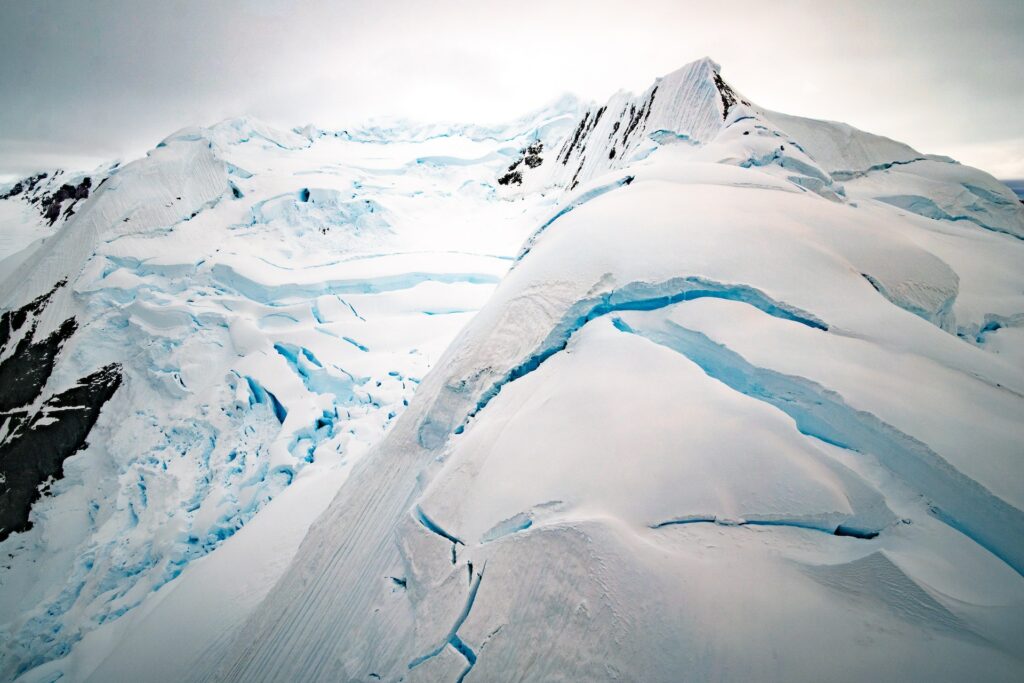
The Antarctic Peninsula, the northernmost part of the mainland of Antarctica, is a land of extremes and ethereal beauty. It’s a surreal, frozen landscape of vast ice shelves, towering mountain ranges, and colossal tabular icebergs, where the sun shines at midnight in summer and darkness prevails in winter.
The Lemaire Channel and Paradise Bay are two of the most stunning locations on the peninsula. The Lemaire Channel, often referred to as ‘Kodak Gap’ due to its photogenic allure, is a narrow passage flanked by towering ice cliffs. Cruising through the channel, you’ll be surrounded by the immense beauty of the Antarctic, with icebergs floating by and glaciers reaching down to the sea.
Paradise Bay, true to its name, is a place of breathtaking beauty. Only on an expedition cruise can you witness the spectacle of calving glaciers and listen to the profound silence of the Antarctic wilderness. The bay is also a popular spot for Zodiac cruises, offering a closer look at the ice formations and the chance to spot seals basking on ice floes.
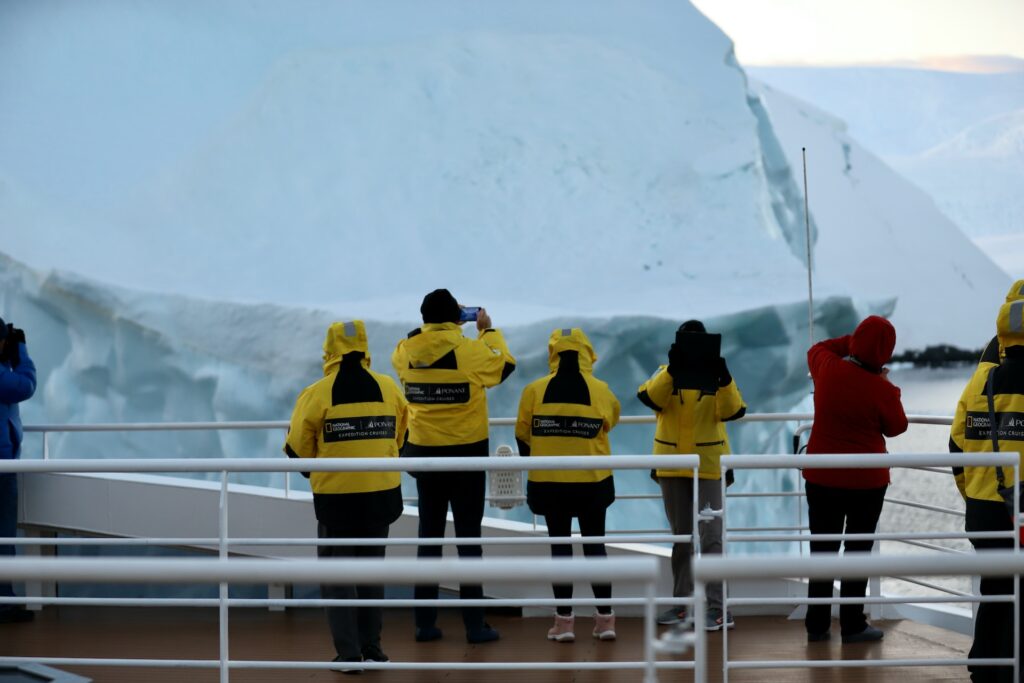
The Antarctic Peninsula is also a haven for wildlife. It’s home to Gentoo, Adélie, and Chinstrap penguin colonies, seals like the Weddell and Leopard, and Humpback whales that come to feed on the abundant krill. Observing these animals in their natural habitat, undisturbed by human presence – hence why larger cruise ships struggle to access some more remote areas here – is a truly humbling experience.
The Galapagos Islands: Isabela & Fernandina
The Galapagos Islands, nestled in the Pacific Ocean off the coast of Ecuador, are a testament to the power of nature and evolution. Isabela, the largest island, and Fernandina, the youngest, are two of the archipelago’s most captivating destinations.
Isabela Island, shaped like a seahorse, is a land of diverse landscapes, from volcanic highlands to lush wetlands. It’s home to unique species like the Galapagos Penguin, the only penguin species found north of the equator, and the Flightless Cormorant, a bird that has adapted to its environment by losing its ability to fly and becoming an adept swimmer instead.
Fernandina Island, although smaller, is no less fascinating. It’s one of the most pristine ecosystems in the world, with no introduced species. Here, you can find the largest marine iguanas basking on the black lava rocks, and watch as flightless cormorants dive into the surf for food.
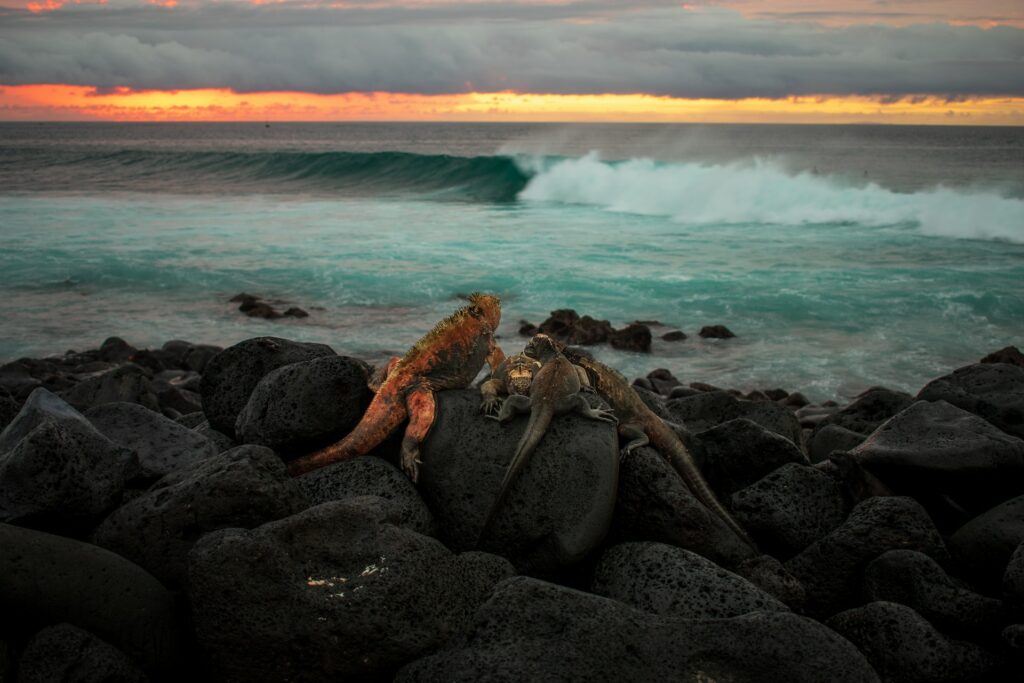
The Galapagos Islands are a place where animals have no fear of humans, offering unparalleled wildlife viewing experiences. Whether you’re snorkelling with playful sea lions, watching blue-footed boobies perform their courtship dance, or observing the slow march of a giant Galapagos tortoise, the islands offer a window into a world where nature takes centre stage. Accordingly, it’s a wonderful place for wildlife photography, though it’s essential you behave as respectfully as possible when wielding a camera.
Beyond the wildlife, the Galapagos Islands are steeped in history and scientific significance. It was here that Charles Darwin formulated his theory of evolution, forever changing our understanding of the natural world.
The Kimberley, Australia: King George River & Mitchell Falls
The Kimberley, located in Western Australia, is one of the world’s last true wilderness areas. This vast region is a tapestry of dramatic landscapes, where towering cliffs and cascading waterfalls carve through the ancient land, and Aboriginal rock art whispers tales of the world’s oldest living culture.
A journey through the Kimberley is a voyage into the heart of Australia’s wild outback. Cruising along the King George River, you’ll be captivated by the sheer grandeur of the twin King George Falls, one of the highest waterfalls in Australia. The river’s dramatic gorges and sandstone cliffs are a sight to behold, changing colour with the shifting sun.
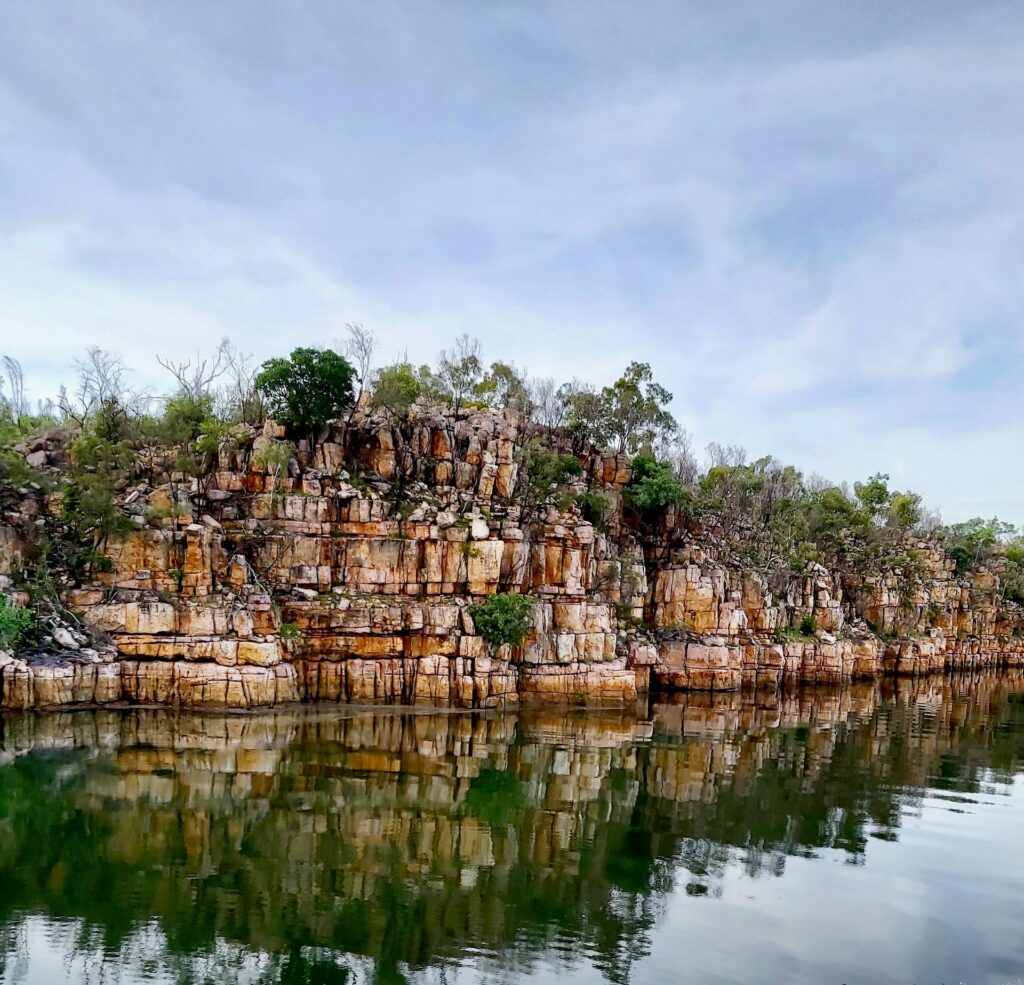
The Kimberley is also home to the mesmerising Mitchell Falls, a four-tiered waterfall that cascades over layers of weathered sandstone. Hiking to the falls is an adventure in itself, with the trail taking you past Aboriginal rock art sites, crystal-clear swimming holes, and lookouts with stunning views over the Mitchell Plateau.
But the Kimberley is not just about its natural wonders. It’s a place where you can delve into Australia’s rich indigenous history. Explore ancient rock art galleries, some dating back over 20,000 years, and learn about the region’s traditional owners, the Miriwoong people, whose connection to the land spans thousands of years.
South Georgia Island: The Serengeti Of The Southern Ocean
South Georgia Island, a British Overseas Territory in the southern Atlantic Ocean, is often referred to as the ‘Serengeti of the Southern Ocean’ due to its abundant wildlife. This remote and rugged island is a paradise for nature lovers and wildlife enthusiasts.
An expedition cruise to South Georgia Island offers a unique opportunity to witness one of the largest king penguin colonies on earth, located at Salisbury Plain and St. Andrews Bay. The sight of tens of thousands of these charismatic birds, huddled together against the stark, snowy landscape, is truly awe-inspiring.
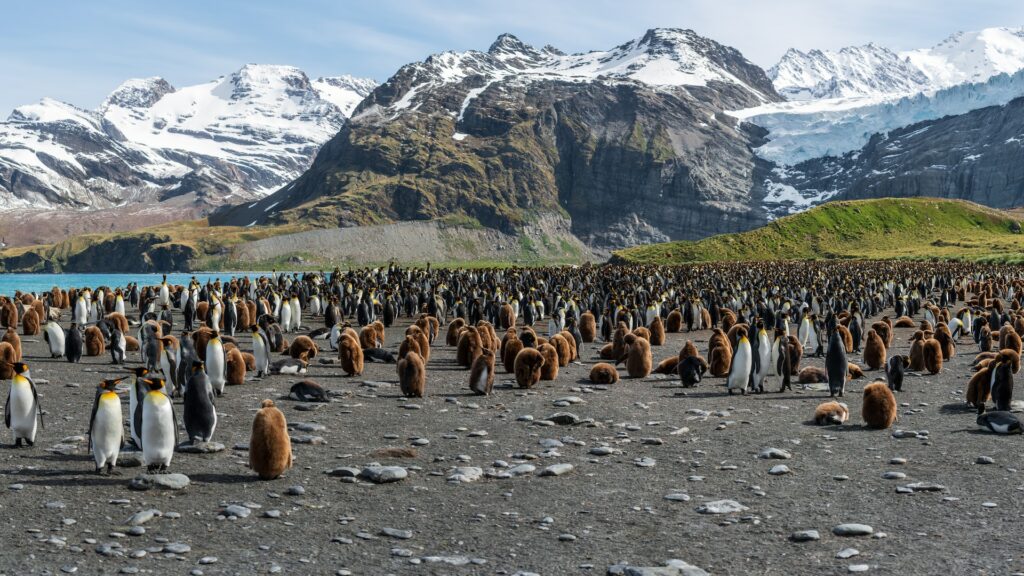
But it’s not just about the penguins. South Georgia is also a breeding ground for elephant seals and Antarctic fur seals. The island’s beaches are often packed with these magnificent creatures, particularly during the breeding season when dramatic battles between rival males can be observed.
South Georgia Island is also steeped in history. Follow in the footsteps of the great explorer Sir Ernest Shackleton, who sought refuge on the island during his ill-fated Endurance expedition. Visit his grave in Grytviken, the island’s former whaling station, and learn about the island’s whaling history at the South Georgia Museum.
Manaus, Brazil: The Heart Of The Amazon
Manaus, the capital of the state of Amazonas in Brazil, is a bustling city located in the middle of the Amazon Rainforest. It’s a gateway to the surrounding jungle and the vast river network, and an immersive experience into the Amazon’s vast and vibrant ecosystem.
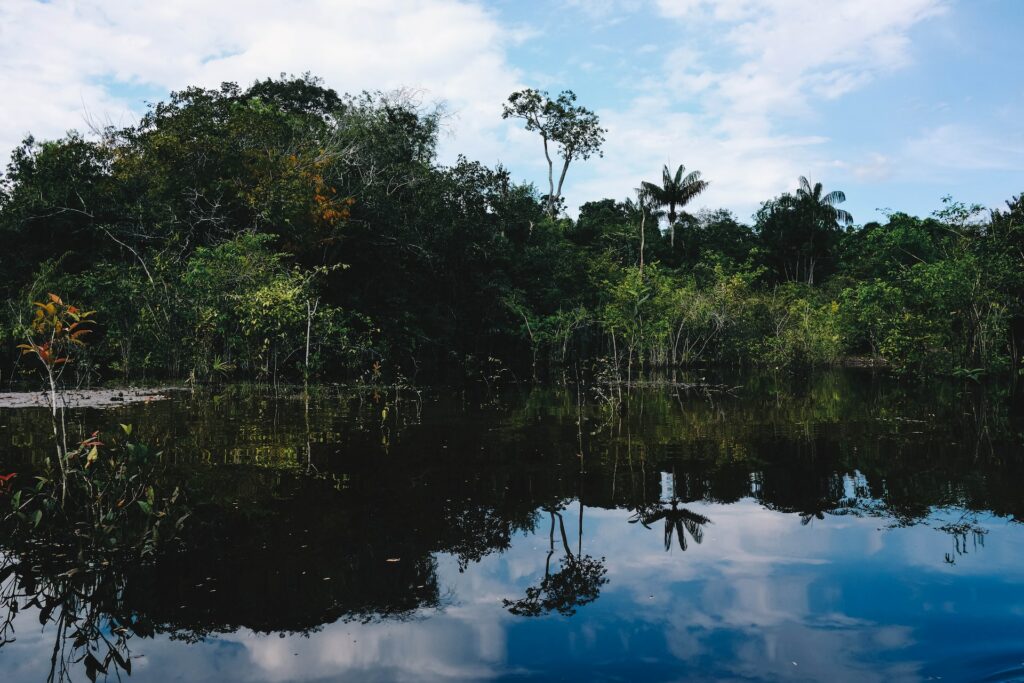
From Manaus, you can venture into the Anavilhanas Archipelago, the world’s largest freshwater archipelago, home to an astonishing array of wildlife, from pink river dolphins to countless species of birds and insects. You can also visit the Meeting of the Waters, a natural phenomenon where the dark waters of the Rio Negro meet the sandy waters of the Amazon River, running side by side without mixing for several kilometres.
The Seychelles: The Aldabra Atoll
The Seychelles, an archipelago of 115 islands in the Indian Ocean, is a tropical utopia of pristine beaches, vibrant coral reefs, and lush nature reserves. Among these, the Aldabra Atoll stands out as a jewel in the crown, a UNESCO World Heritage Site that is often referred to as one of the wonders of the world.
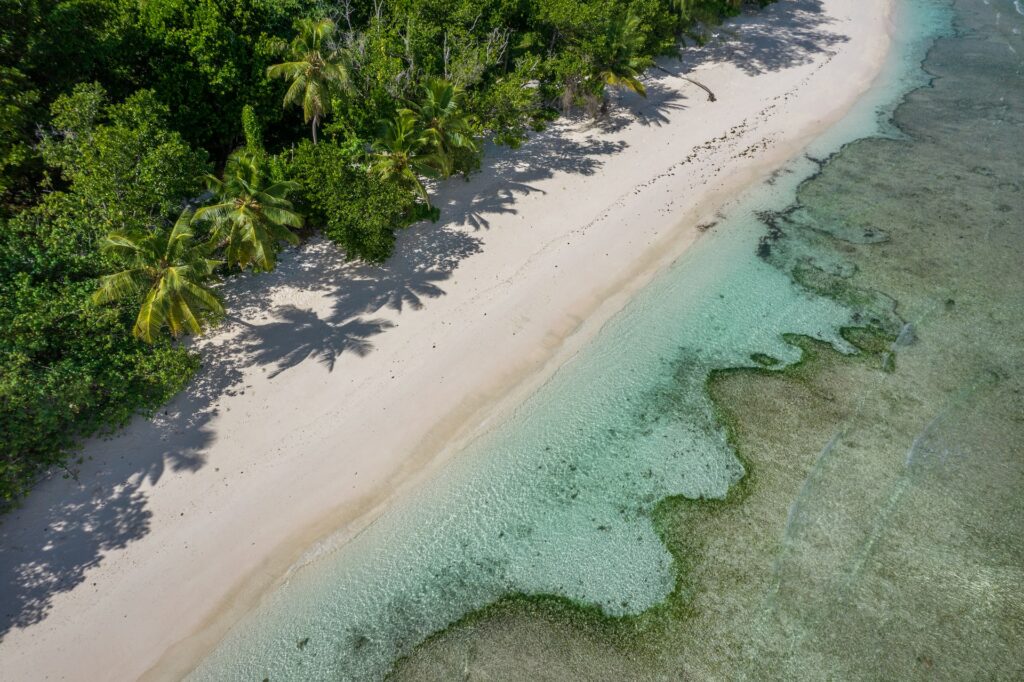
An expedition cruise to the Seychelles is incomplete without a visit to the Aldabra Atoll. This coral atoll is the world’s second-largest and is virtually untouched by humans (and certainly inaccessible to larger cruises) offering a unique sanctuary for a wealth of wildlife. It is home to the largest population of giant tortoises in the world, with around 100,000 Aldabra Giant Tortoises roaming freely on the atoll.
The Aldabra Atoll is also a birdwatcher’s paradise, hosting the largest colony of frigatebirds in the Seychelles and the only flightless bird in the Indian Ocean, the White-throated Rail. The atoll’s lagoons and mangroves are teeming with marine life, including green turtles, manta rays, and a variety of sharks and tropical fish.
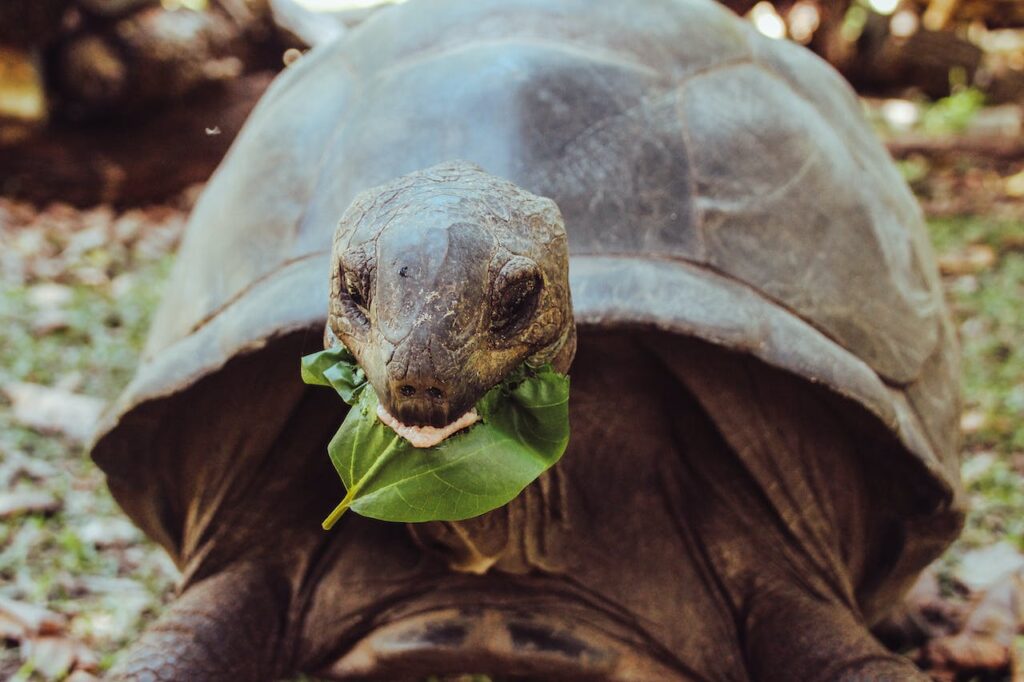
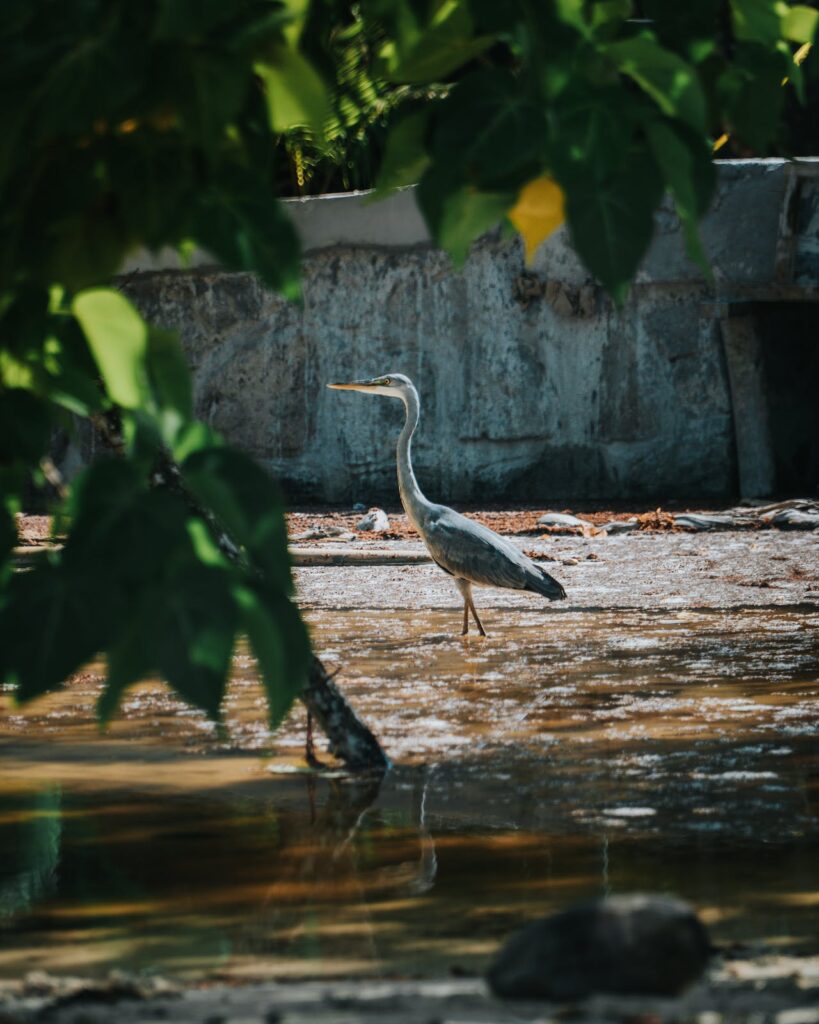
Beyond Aldabra, the Seychelles offers a wealth of natural and cultural experiences. Visit the Vallée de Mai Nature Reserve on Praslin Island, a primeval forest that is home to the unique Coco de Mer palm and the rare Seychelles Black Parrot. Explore the vibrant markets and Creole architecture of Victoria, the capital city on Mahé Island, and enjoy the world-class beaches and crystal-clear waters that the Seychelles are famous for.
Read: 5 dream luxury holiday destinations for 2023
The Marquesas Islands, French Polynesia: The Mysterious Islands
The Marquesas Islands, a group of volcanic islands in French Polynesia, are a captivating blend of rugged beauty, rich culture, and ancient history. Known as ‘The Mysterious Islands’, they are a place of towering waterfalls, lush valleys, and dramatic cliffs that plunge into the azure Pacific Ocean.
An expedition cruise to the Marquesas Islands is a journey into a world steeped in Polynesian tradition. Visit the island of Nuku Hiva, the largest of the Marquesas, where you can explore the ancient stone tiki statues and petroglyphs at the Tohua Kamuihei archaeological site. Discover the island’s rich history of tribal warfare and cannibalism, and learn about the fascinating Marquesan tattoo tradition, which has been revived in recent years.
On Hiva Oa, the second largest island, you can pay homage to the late French artist Paul Gauguin and Belgian singer Jacques Brel at the cultural centre dedicated to their memory. Explore the island’s lush landscapes, which inspired many of Gauguin’s most famous paintings, and visit his final resting place in the Calvary Cemetery.
The Marquesas are also a haven for wildlife. On the island of Ua Huka, visit the Vaikivi botanical garden, home to a variety of endemic plant species, and the island’s bird sanctuary, which is working to protect and reintroduce the endangered Ultramarine Lorikeet.
For the adventurous, the Marquesas offer ample opportunities for hiking, horseback riding, and exploring by 4×4. From the breathtaking views atop the island of Fatu Hiva’s Bay of Virgins to the remote beaches of Ua Pou, there’s a wealth of natural beauty to discover.
Baffin Island, Canada: The Arctic Wilderness
No voyage into remote destinations would be complete without entering the Arctic via cruise ship. Baffin Island, located in the northeastern Arctic Ocean, is Canada’s largest island and the fifth-largest in the world. It’s a land of stark, rugged beauty, where towering ice-capped mountains meet expansive tundra and deep fjords. Baffin Island is home to an array of Arctic wildlife, including polar bears, Arctic foxes, and a variety of whale species.
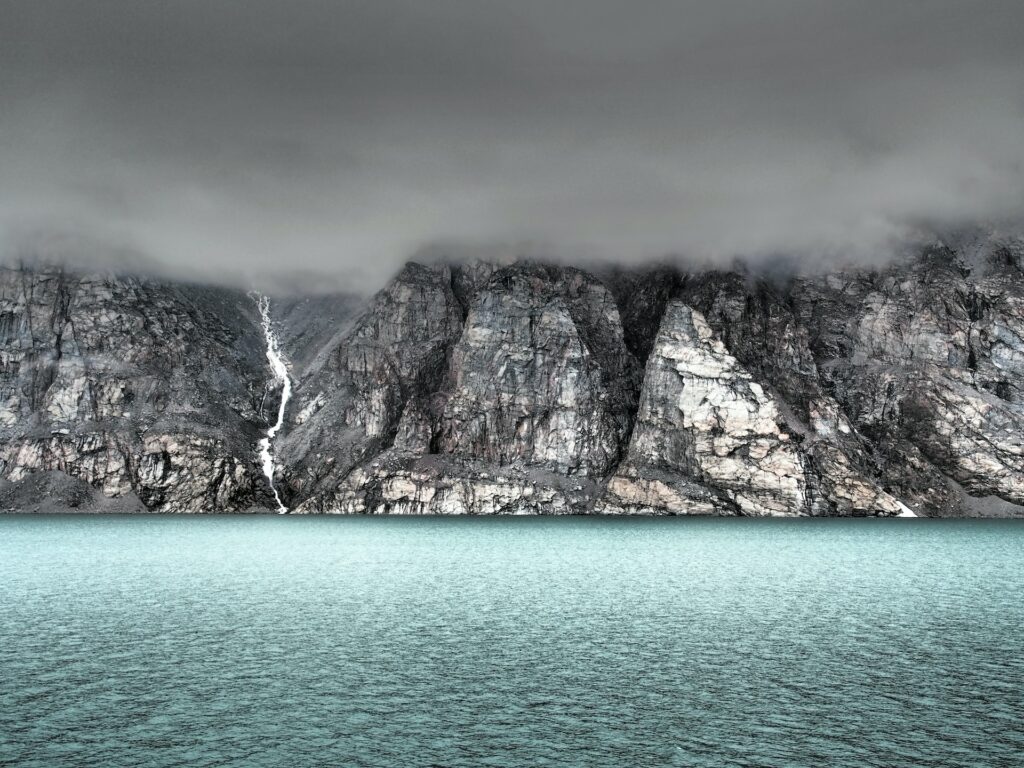
An expedition cruise to Baffin Island brings with it a unique opportunity to immerse yourself in the Inuit culture. Visit the town of Iqaluit, the capital of Nunavut, and explore its rich history and vibrant arts scene. Discover ancient Thule sites and marvel at the intricate Inuit carvings in local art galleries.
Venture into the Auyuittuq National Park, a pristine Arctic landscape that translates to ‘the land that never melts’. Here, you can hike along the Akshayuk Pass, a traditional Inuit travel corridor, and witness the impressive Mount Thor, boasting the world’s tallest vertical cliff.
Baffin Island is also a fantastic place for birdwatchers, with the migratory bird sanctuaries at East Bay and Dewey Soper offering a chance to see rare species such as the ivory gull.
The Bottom Line
Embarking on an expedition cruise is not just about travel, it’s about immersing yourself in the extraordinary. It’s about venturing into the heart of the world’s most remote and pristine landscapes, from the icy realms of Antarctica to the tropical paradise of the Seychelles. It’s about witnessing tracing the footsteps of great explorers in South Georgia, and marvelling at the evolutionary wonders of the Galapagos. It’s about delving into the rich cultural heritage of the Marquesas Islands and the Kimberley, and exploring the biodiversity of the Amazon.
And with that round of water-based exploration complete, we think we’re feeling a little seasick. Do you mind if we go for a lie down?




